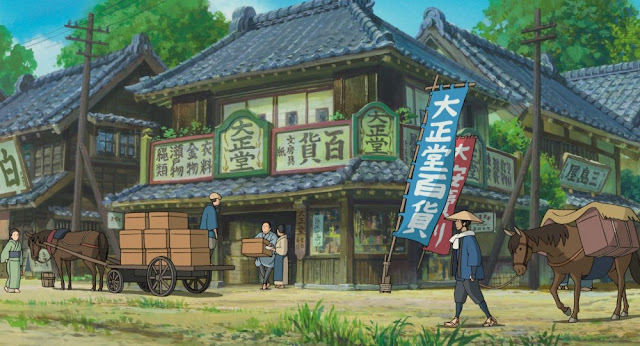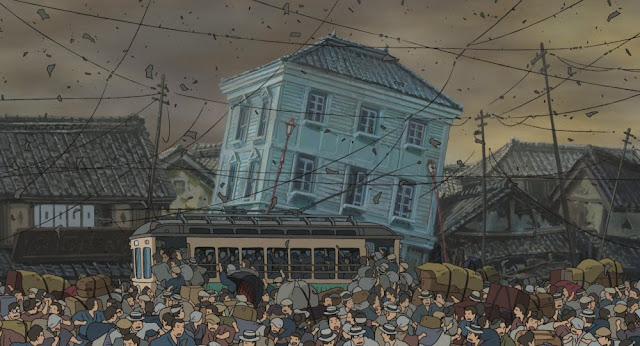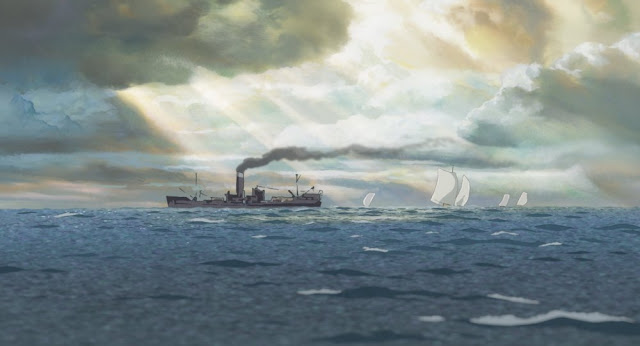The Wind Rises
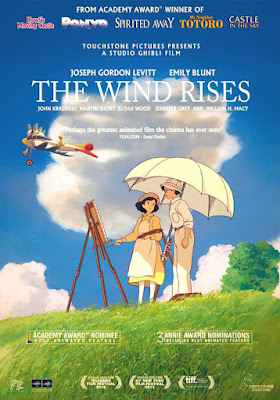
Director: Hayao
Miyazaki
Year: 2013
Rating: 8.0
This was to be Hayao Miyazaki's final
film as he had announced his retirement but it seems that he is working
on another and I have no doubt Studio Ghibli fans are thrilled. This is
a marvelous film and the animation literally soars at times with its stunning
landscapes and period detail. There were moments of pure astonishment on
my part simply gazing at the passing scenery. Miyazaki keeps coming back
to movement in this film - primarily in a number of train journeys but also
from above in stunningly imagined air planes. By doing so it allows him to
paint Japan in the early part of the 20th century. As trains roll on they
pass villages, cities and farms teeming with life and people and with great
detail we are able to visit the past. The animation just knocked me out.
But I expect people are used to that from his films - he isn't a legend for
nothing.
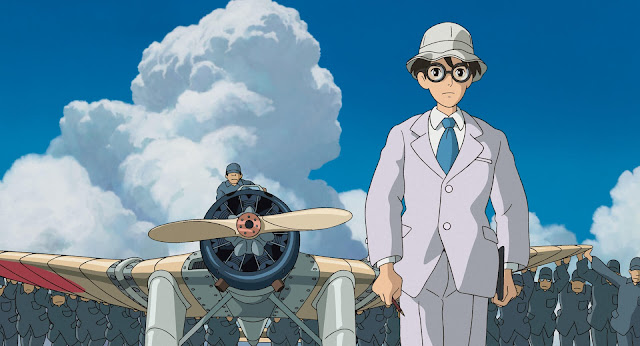
What is really surprising is the story
itself; a combination of fact and fiction interwoven to address Japanese
history in these years as well as to offset it with a romantic tragic tale.
There isn't really a speck of cuteness or fantasy in this film - no talking
animals, no children magically exploring the world - it is a serious illumination
of a man's life and how he becomes caught up in a war machine without really
understanding it or morally contemplating it. He just wanted to build the
best air planes that he could. But they were to be used for total destruction.
How much guilt should you carry. How responsible are you for how your inventions
are used. It is a conundrum that all science has had to deal with. The subject
of the film was a real person - an airplane designer named Jiro Horikoshi
- who was to build the Prototype 12 aka Model 00 - best known as the famous
Zero jet fighter.
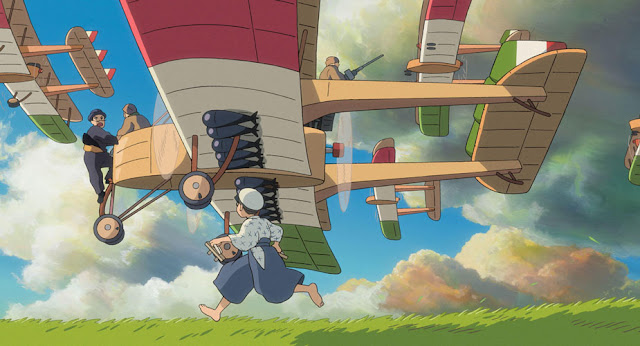
But the film begins long before that occurs
- Jiro as a youth literally dreams of flying and meeting an Italian air plane
designer Caproni - a real person - who in the dream tells him that planes
should not be used for war. These are stunning animation sequences as Jiro
first sees the planes flying high above and as they come closer he sees that
they are loaded with bombs and machine guns. He is near-sighted and
so knows that he can't fly and so decides to become an aeronautical engineer.
In one spectacular set piece he is on his way to study in Tokyo when the
great Kanto Earthquake of 1923 strikes and much of Tokyo is consumed in fire.
He helps a young girl named Nahoko and her maid to escape. After graduating
he is employed by Mitsubishi to engineer planes. On a holiday many years
later he again meets a now adult Nahoko and they fall in love. She has TB.
He builds the Zero. War comes. Japan is destroyed.
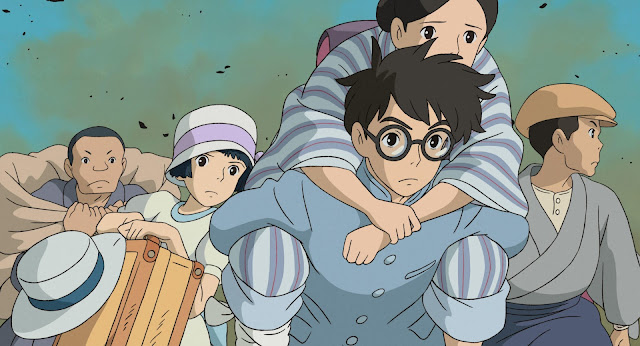
The section about Jiro and his pursuing
his dream to build planes is basically factual - his tragic romance with
Nahoko is totally fictionalized. The real Jiro had five children with his
wife. In his diary the real Jiro condemned the war as insanity but he built
one of the greatest fighter jets ever. As he mournfully says in the film,
they all left and none of them came back. He just wanted to build beautiful
graceful planes - but he built death. Much of this is left to us to figure
out and think about. At one point his friend Kiro (a real person) says he
is building a bomber that can fly 3,000 miles loaded with bombs. Jiro asks
why. Kiro doesn't know. Well, we know. Pearl Harbor. The war itself is skipped
over - just the rubble that remained is shown in a final dream sequence
when Caproni reappears. Miyazaki's father interestingly supplied parts to
Mitsubishi and to the war effort. How much you might wonder did this play
in his wanting to make this film. He is a well-known pacifist but he never
condemns Jiro - just the war. But it will be the animation that sticks with
you - in particular in the first half of the film before it settles into
his true love, Nahoko. It is glorious.





